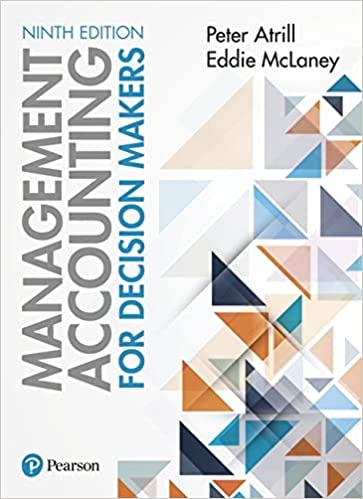Test #3 (Chapters 5-6) Perpetual Inventory Using FIFO The following units of a particular item were available for sale during the calendar year: Jan. 1 Apr. 19 June 30 Inventory Sale Purchase Sale Purchase 4,000 units at $20 2,500 units 6,000 units at $24 4,500 units 1,000 units at $25 Sept. 2 Nov. 15 The firm maintains a perpetual inventory system. Determine the cost of goods sold for each sale and the inventory balance after each sale, assuming the first-in, first- out method. Present the data in the form illustrated in Exhibit 3. Under FIFO, if units are in inventory at two different costs, enter the units with the LOWER unit cost first in the cost of Goods Sold Unit Cost column and in the Inventory Unit Cost column. Schedule of Cost of Goods Sold FIFO Method Purchases Unit Cost Cost of Goods Sold Unit Cost Date Quantity Total Cost Quantity Total Cost Jan. 1 Apr. 19 June 30 Sept. 2 Nov. 15 Dec. 31 Balances lar item were available for sale during the calendar is at $20 is at $24 s at $25 >ventory system. Determine the cost of goods sold balance after each sale, assuming the first-in, first- h the form illustrated in Exhibit 3. Under FIFO, if units t costs, enter the units with the LOWER unit cost first Cost column and in the Inventory Unit Cost column. Schedule of Cost of Goods Sold FIFO Method Cost of Goods Sold Unit Cost Inventory Unit Cost Total Cost Quantity Total Cost Quantity Total Cost Perpetual Inventory Using FIFO The following units of particular item were available for sale during the calendar year Jan 1 Inventory 4,000 units at $20 Apr 19 Sale 2.500 units June 30 Purchase 6.000 units at $24 Sept. 2 Sale 4,500 units Nov. 15 Purchase 1,000 units at $25 The firm maintains a perpetual inventory system. Determine the cost of goods sold for each sale and the inventory balance after each sale, assuming the first in first-out method. Present the data in the illustrated in Exhibit 3. Under FIFO, if units are in inventory at two different costs, enter the units with the LOWER unit cost first in the cost of Goods sold Unit Cost column and in the inventory Unit Com Schedule of Cost of Goods Sold FIFO Method Purchases Cost of Goods Sold Inventory Date Quantity Unit Cost Total Cost Quantity Unit Cost Total Cost Quantity Unit Cost Total Cost tant Apr. 19 June 30 Sept. 2 Nov 15 Dec 31 Balances









